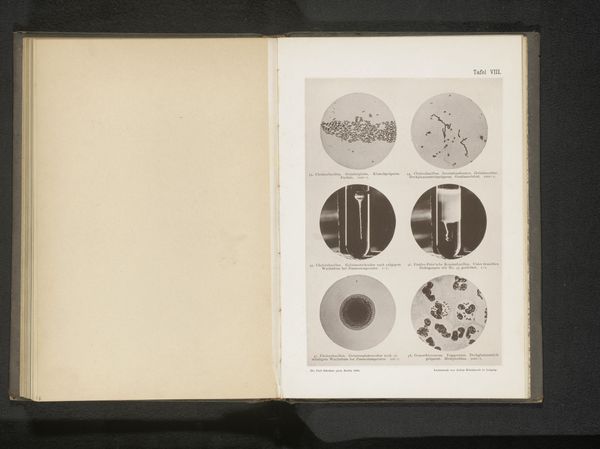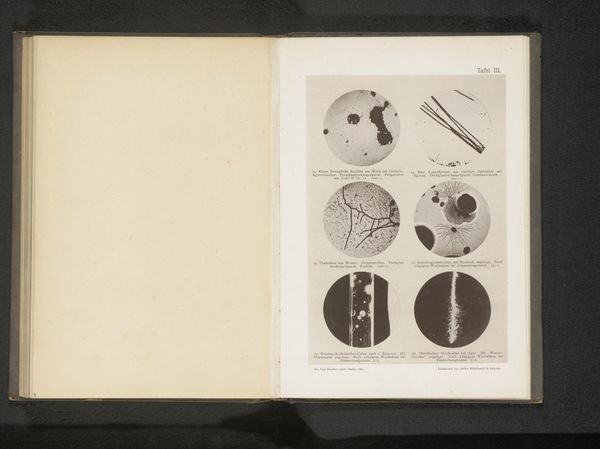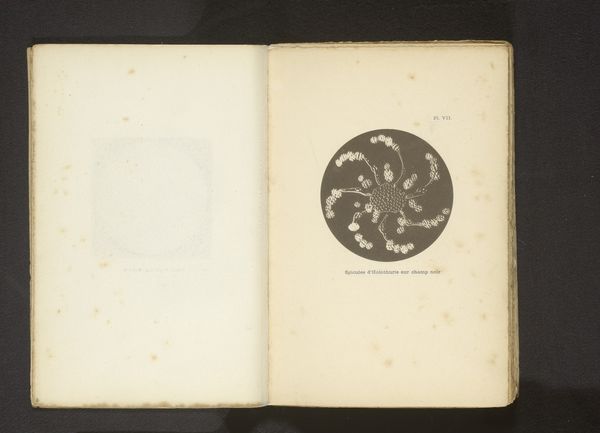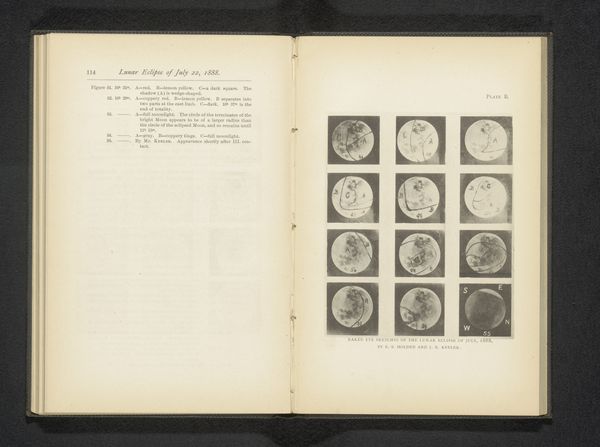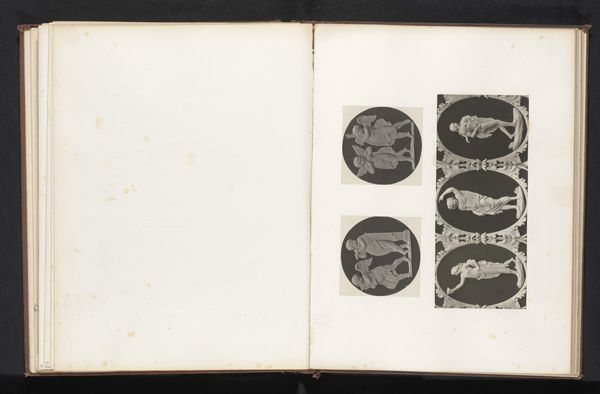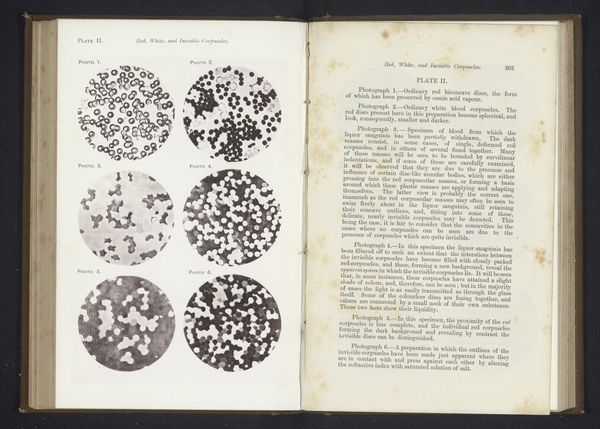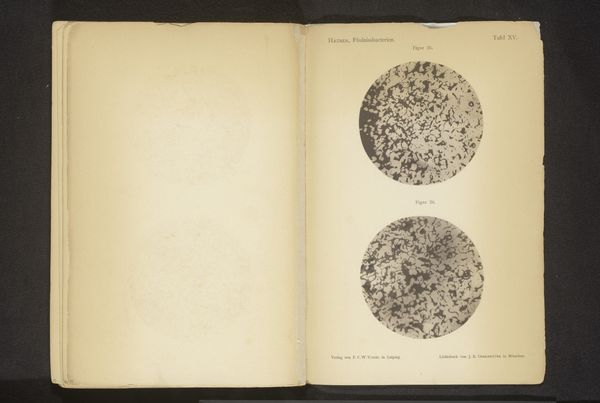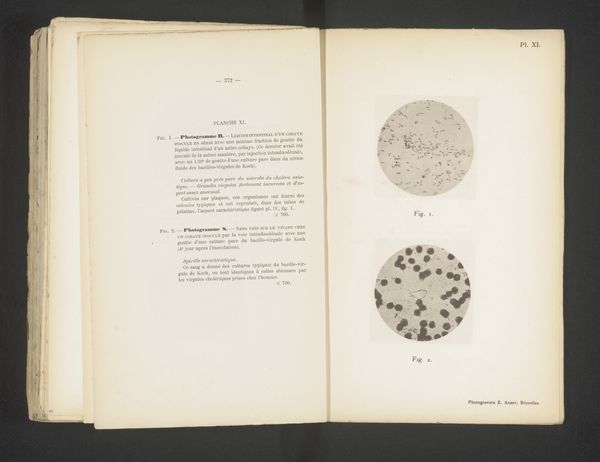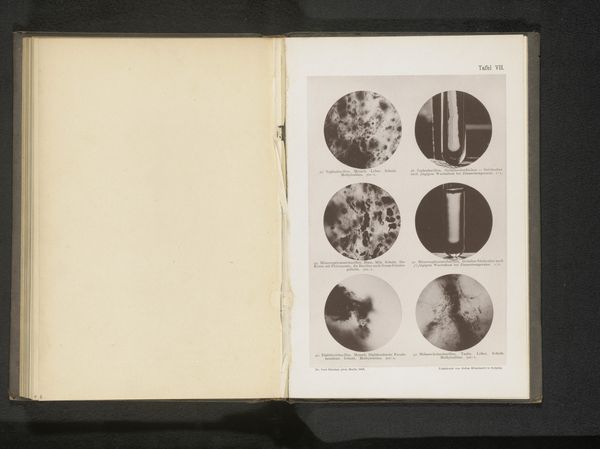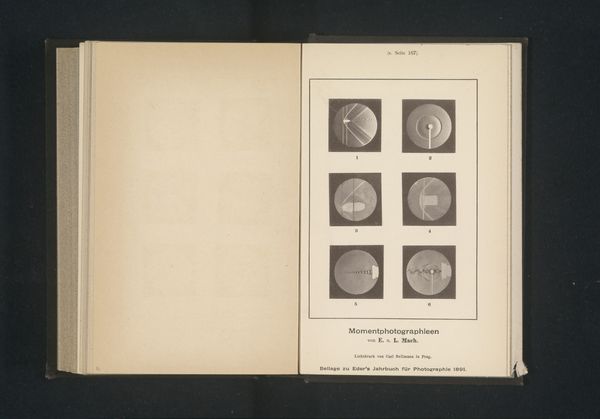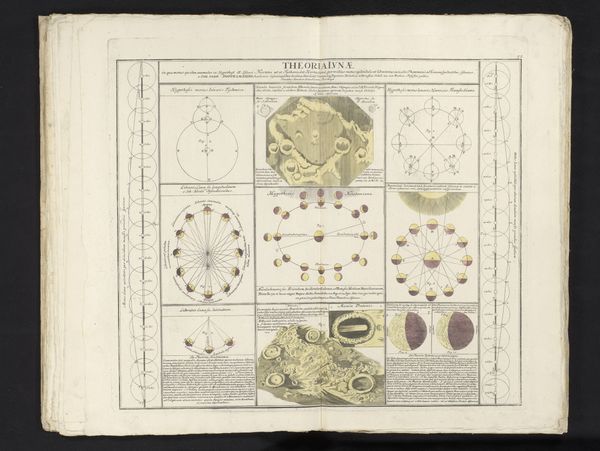
Zes microscopische vergrotingen van onderdelen van het menselijk lichaam before 1868
0:00
0:00
print, photography
# print
#
photography
#
academic-art
Dimensions: height 176 mm, width 116 mm
Copyright: Rijks Museum: Open Domain
Berthold Benecke made this bound book of microphotographs, using photographic processes to capture magnified views of human tissues. In this era, photography was emerging as a powerful tool for scientific investigation. The microphotographs, produced with specialized equipment, document the hidden architecture of the human body, showcasing the intricate patterns and textures of cells and tissues. Photography provided seemingly objective records of a world previously unseen, but it was also a highly skilled craft. The act of capturing and printing these images involved manual labor, careful attention to detail, and the mastery of chemical processes. These photographs reflect a specific moment in the history of science, where the power of technology allowed for new ways of seeing, challenging traditional ways of understanding the human body. By emphasizing the importance of materials, making, and historical context, we can gain a deeper appreciation for the rich cultural significance embedded within scientific and artistic artifacts.
Comments
No comments
Be the first to comment and join the conversation on the ultimate creative platform.

